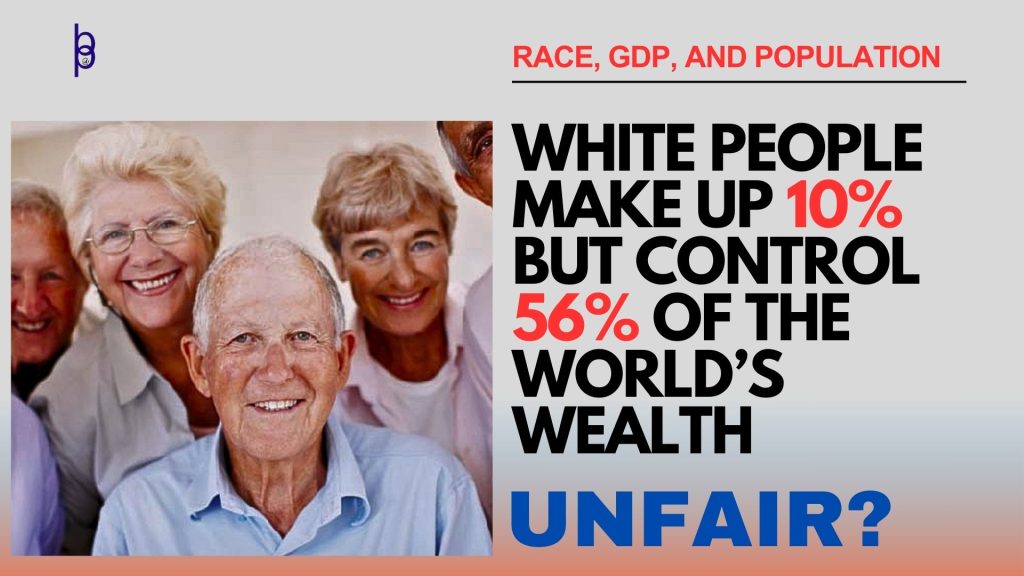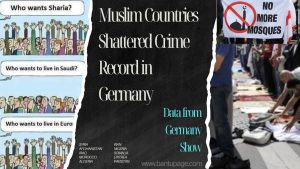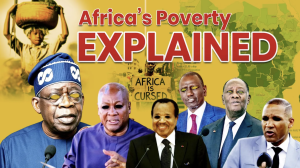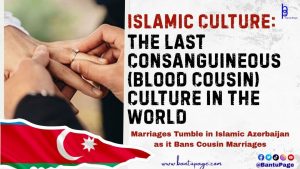
The World by Race, GDP, and Population
The world’s diversity is getting ever closer. Five decades ago, it would have been unfathomable that a French football national team would feature more non-white players, that the president of the United States would be half-black, or that a Japanese tennis player would be half-black. The world is gradually progressing and accepting its diversity. However, there are still hurdles to overcome. Whilst interracial relationships and interaction have increased, the wealth gap has widened.
How much impact has colonisation and the transatlantic slave trade had on black Africa? Is there a spillover effect? Have Western democracies proven their effectiveness against dictatorships? The argument is compelling, as nine out of the ten wealthiest countries, measured by nominal GDP per capita, are democracies. Democracies, not dictatorships, are responsible for researching and developing most of the technology and equipment we use worldwide. Qatar is the only undemocratic country in the top ten in terms of GDP per capita. However, it produces or manufactures nearly nothing. It heavily relies on natural resources, necessitating expertise from democratically led countries.
In this article, I want to compare the shared light to the disproportionate allocation of the wealth that makes our world go round. Though disproportionate, the argument should be: Is the disproportionality unfairly accrued? I will leave that answer to you, the readers. The Caucasians’ dominance in the last centuries has not wavered; with just 10% of the world’s population, they command more than half of its wealth and control over 65% of its technology. Japan and Korea hold barely 2% and 1%, respectively, but have higher GDPs than any other race except Caucasians. Han Chinese followed closely, with the Arabs sealing fifth place.
Black Africans are at the bottom of the list, with a GDP per capita of just under $1,500, compared to first-place Caucasians at $70,000, which is 46 times more. The bottom four are South America, Southeast Asia, South Asia, and Sub-Saharan Africa. The fastest-growing racial group in the baby production factory is Black, followed by South Asia and the Middle East. Their population has not impacted economic growth, which begs the question: is there a benefit in overproducing babies if it doesn’t help your economy? Every fourth person on earth is South Asian, every fifth is black, and every eighth is Arab.
 The White racial group is by far the most wealthiest
The White racial group is by far the most wealthiest
Breakdown:
Whites make up 800 million people or 10% of the world’s population, but they control 56% of the world’s economy and have the highest GDP per capita, at $56.5 trillion. Whites encompass Russia, the USA, Canada, Australia, New Zealand, and Europe, excluding Eurasia.
The Japanese came next, making up just 2% of the world’s population (122 million) but controlling 4% of its economy ($4.1 trillion).
Koreans came third, with 77 million, or 1% of the world’s population, but control 2% of the world’s economy, with $1.88 trillion. Korea included both North and South Korea.
Despite ranking fourth with 1.4 billion people, or 18% of the world’s population, Han Chinese control 20% of the world’s economy, with $20.7 trillion. (Han Chinese included Taiwan, Hong Kong, Macau, and Singapore.)
Arabs were fifth, with 475 million people, or 6% of the world’s population, but control 5% of the world’s economy. (Arab included Turkey, Iran, Morocco, Tunisia, Algeria, Libya, and Egypt.)
South America came in sixth, with 434 million people, or 5% of the world’s population, but controls 4% of the world’s economy. South America encompasses all countries within its borders.
Southeast Asia came in seventh, with 675 million people, or 8% of the world’s population, but it controls 3% of its economy. Every country in Southeast Asia was included.
South Asia was eighth, with 2.2 billion people, or 28% of the world’s population, but it controls 5% of its economy. South Asia encompasses all the countries in the region.
Despite accounting for 1.3 billion, or 16% of the world’s population, blacks only control 2% of the world’s economy. The black category encompassed every country in sub-Saharan Africa.
*Position was ranked based on GDP
**Eurasia and Central America were not included.
By Ikechukwu ORJI





